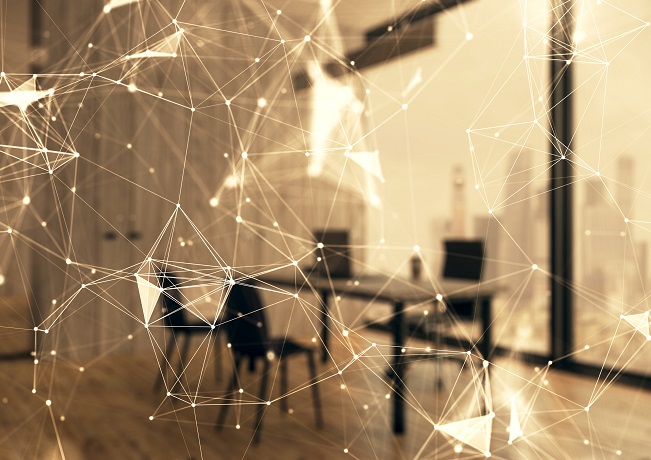As restaurants, retail outlets, and other non-essential operations open back up, following months of COVID-19 lockdowns, one thing seems to be clear: The new normal is here to stay for at least a while. Outside the office, restaurants are expanding outdoor seating, retail outlets are continuing with mask policies, and movie theaters are planning a return at reduced capacity. While tangential to workspace planning, this all feeds into a general shift in awareness around hygiene, spaces, and limiting person-to-person interactions — all elements that surely relate to the new normal of office working.
As we get ready to return to the office, workplace strategists have been busy looking at these elements and asking themselves: How do I incorporate them into my open office? Some workplace pundits have gone so far as to suggest the
cubicle’s return, erecting plexiglas walls instead of the muted gray panels of yesteryear. This has its obvious problems. What becomes of the watercooler chats? More importantly, what of collaborating freely and openly without restrictions? Do we go back to a siloed organization? And despite the litany of complaints against open offices, they have, quite literally, torn down the walls that inhibited ad hoc collaboration.
The New Tech-Infused Open Office
Maybe the answer to what to do with open offices isn’t whether they’re going away but rather how they can evolve to meet the challenges of COVID-19 and beyond.
In
a recent WorkSpace Connect post, Eric Krapf; WorkSpace Connect publisher, GM and program co-chair of Enterprise Connect, discussed how office systems and collaboration technologies will be crucial for the future of offices. So to get further insight into the specific technology that might be needed for open offices, I turned to Chris Drish, VP of sales and marketing for North America for workplace technology provider Embrava, which won a
Best of Enterprise Connect award. During our conversation, Drish echoed many of the things that Krapf referenced in his article and said that "technology is going to be absolutely paramount." One technology Drish quickly pointed to was the meeting room and desk booking software from providers like Cloud Booking,
Robin, and others, which allow enterprises to assign employee seating in a way that meets social distancing requirements.
And for many organizations, the software won’t be the only technology that they’ll need to keep employees safe within an open office. When integrated with booking systems, presence lights from companies like Embrava and Luxoafor provide a simple, visual way to show if a desk or room is taken, reserved, or will be available soon — and some will now be able to extend to the COVID-19 use case. For example, Embrava’s desk signs now include a purple light for “awaiting clean” or an option to display a red light with a message that says the space is not in commission due to social-distancing requirements, Drish said.
The low-tech alternative of just pushing in chairs and taping up signs for unavailable desks or rooms — an initial approach by some Embrava clients, Drish said — has its obvious issues. Someone would have to print signs and go around touching chairs to tape them on, creating a lot of unnecessary touching of surfaces, Drish explained. Once a device like a presence light is installed, everything is done virtually.
Booking systems and presence devices not only can help create safer, socially distant open office spaces, but something else, too: data. "If you understand how many people are coming into the office on a daily basis, ... then you can start refining how many desks [and rooms] you actually need and potentially eliminate real estate and capital costs," Drish said. With the right data, workplace strategists can glean insight into the effectiveness of their social-distance planning, as well.
Insuring Employees Feel Safe
And while technology will remain an ever-increasingly element of the “new” open office, it doesn’t have to be the only component. Taking a quick look outside the office again, a variety of ways businesses are demonstrating innovative ways of creating safer spaces. From
a zoo café in Japan using life-sized stuffed animal (a capybara) to promote social distancing or a Maine restaurant that is creating a unique dining experience with fabric-covered
social screens, it doesn’t have to be just technology and rearranging furniture to make employees have a fun and collaborative space to work in.
Ultimately, whatever workplaces do to get back to normal, Drish reminded me of one crucial thing for future workplace success: “You’ve got to put yourself in the mindset of the employee returning to the office.”




